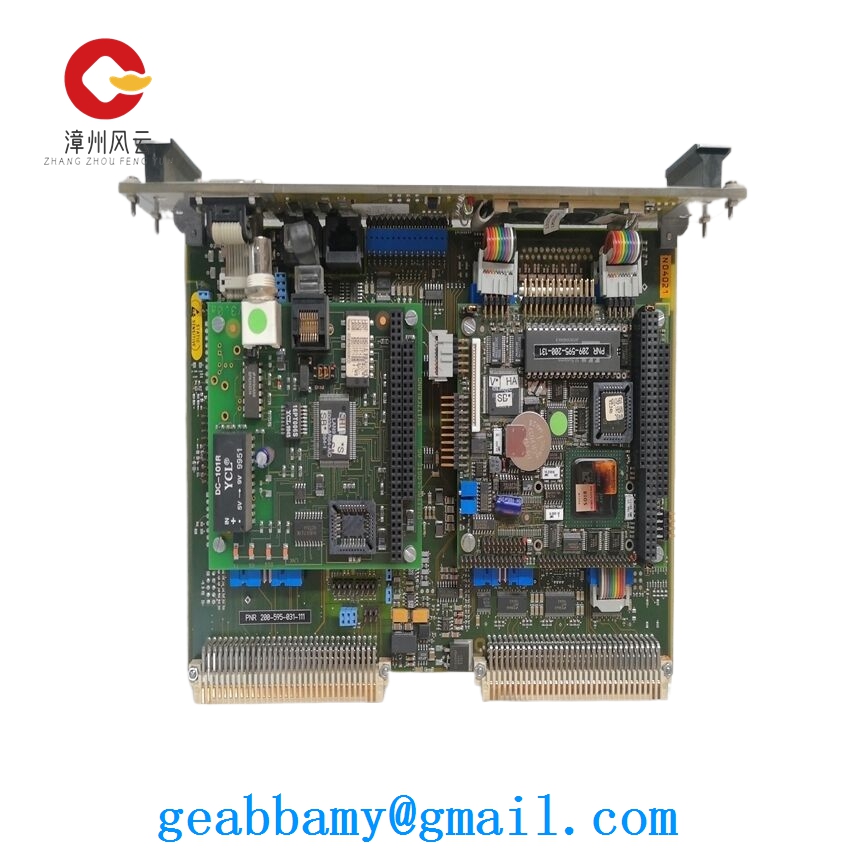Technical Parameters of Vibro-Meter 244 – 620 – 000 Signal Conditioner

1. General Description
The Vibro-Meter 244 – 620 – 000 signal conditioner is a precision device designed to process and condition various types of vibration and dynamic measurement signals. It is widely used in industrial monitoring systems, particularly in applications where accurate and reliable signal conversion and amplification are essential for machinery health monitoring, process control, and condition – based maintenance.
2. Input Characteristics
2.1 Input Signal Types
- Accelerometer Signals: Capable of accepting input signals from piezoelectric accelerometers, which are commonly used for measuring vibration acceleration. It can handle a wide range of accelerometer sensitivities, allowing it to be compatible with different types of sensors available in the market.
- Velocity Transducer Signals: Also supports input from velocity transducers, which convert mechanical vibration velocity into electrical signals. This makes it suitable for applications where velocity measurements are more relevant for the analysis of machinery behavior.
- Displacement Transducer Signals: Can process signals from displacement transducers, such as eddy – current proximity probes, which measure the relative displacement between a rotating or moving part and a stationary reference.
2.2 Input Range
- The input range is adjustable, typically covering a broad spectrum to accommodate different sensor outputs and measurement requirements. For example, it may have an input range that can be set from a few millivolts to several volts, depending on the specific configuration and the type of transducer connected.
2.3 Input Impedance
- High input impedance is a key feature, usually in the range of several mega – ohms (e.g., 10 MΩ or higher). This ensures that the signal conditioner does not load the transducer significantly, minimizing signal distortion and maintaining the accuracy of the input signal.
3. Output Characteristics
3.1 Output Signal Types
- Voltage Output: Provides a standard voltage output signal, such as ±10 V or 0 – 10 V, which is compatible with most data acquisition systems, control panels, and monitoring devices. The voltage output is linearly related to the input signal, allowing for easy and accurate representation of the measured parameter.
- Current Output: In some configurations, it may offer a current output option, typically 4 – 20 mA. Current output signals are advantageous in long – distance signal transmission applications because they are less susceptible to noise and voltage drops compared to voltage signals.
3.2 Output Accuracy
- High output accuracy is achieved through precision circuit design and calibration. The output signal is typically accurate to within a small percentage of the full – scale range, such as ±0.1% or better, ensuring reliable and consistent measurement results.
3.3 Output Load Capacity
- The signal conditioner can drive a certain load impedance at the output. For voltage outputs, it may be able to drive loads with an impedance of several kilo – ohms (e.g., 10 kΩ), while for current outputs, it can handle load resistances within a specified range to maintain the accuracy of the 4 – 20 mA signal.
4. Signal Conditioning Functions
4.1 Amplification
- The device offers adjustable gain settings, allowing the user to amplify the weak input signals from the transducers to a level suitable for further processing or display. The gain can typically be set in discrete steps or continuously over a certain range, providing flexibility in matching the signal conditioner to different sensor outputs.
4.2 Filtering
- Built – in filtering capabilities are included to remove unwanted noise and interference from the input signal. Common filter types may include low – pass, high – pass, and band – pass filters. The cutoff frequencies of these filters are adjustable, enabling the user to tailor the frequency response of the signal conditioner to the specific measurement requirements. For example, in vibration monitoring, a low – pass filter can be used to eliminate high – frequency noise that is not relevant to the analysis of machinery vibration.
4.3 Integration and Differentiation
- Some models of the Vibro-Meter 244 – 620 – 000 may offer integration and differentiation functions. Integration can be used to convert acceleration signals into velocity signals, and further integration can convert velocity signals into displacement signals. Differentiation, on the other hand, can convert displacement signals into velocity signals and velocity signals into acceleration signals. These functions are useful in applications where different dynamic parameters need to be derived from a single type of transducer signal.
5. Environmental Specifications
5.1 Operating Temperature Range
- The signal conditioner is designed to operate within a specified temperature range, typically from – 20°C to + 60°C (or – 4°F to + 140°F). This allows it to be used in a variety of industrial environments, including those with extreme temperature conditions.
5.2 Storage Temperature Range
- It has a wider storage temperature range, ensuring that the device can be stored safely without damage when not in use. The storage temperature range may extend from – 40°C to + 85°C (or – 40°F to + 185°F).
5.3 Humidity
- Designed to operate in environments with a relative humidity range of 5% to 95% (non – condensing), making it suitable for use in humid industrial settings.
5.4 Vibration and Shock Resistance
- Meets industrial standards for vibration and shock resistance, ensuring reliable operation even in environments with mechanical vibrations or occasional shocks, such as in manufacturing plants or near heavy machinery.
6. Power Supply Requirements
- The Vibro-Meter 244 – 620 – 000 typically requires a stable DC power supply. The input voltage range may be, for example, 18 – 30 V DC, and the power consumption is relatively low, which helps to reduce operating costs and simplify the power supply design in the overall monitoring system.
7. Mechanical Specifications
7.1 Form Factor
- It is usually available in a compact and rugged housing, which can be easily mounted on DIN rails or in control panels. The form factor is designed to save space and facilitate integration into existing industrial control systems.
7.2 Mounting Options
- Provides various mounting options, such as DIN rail mounting or panel mounting, to suit different installation requirements. The mounting hardware is typically included with the device, making the installation process straightforward.
In conclusion, the Vibro-Meter 244 – 620 – 000 signal conditioner is a versatile and high – performance device that offers a wide range of features for processing and conditioning vibration and dynamic measurement signals. Its adjustable input and output parameters, signal conditioning functions, environmental robustness, and mechanical flexibility make it a valuable component in industrial monitoring and control applications.


